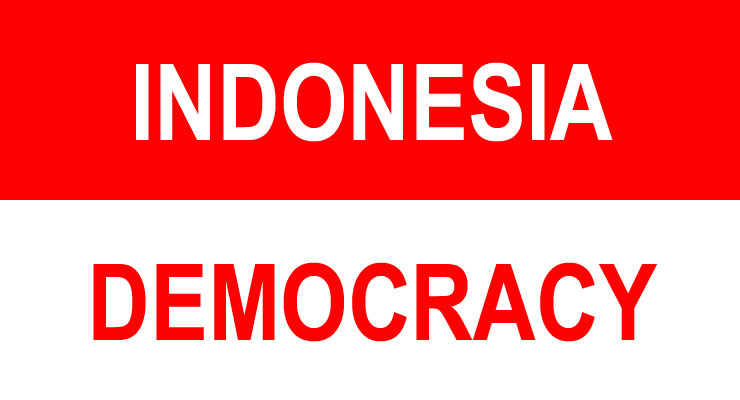
Newly declassified files from the U.S. Embassy in Jakarta from 1997 to 1999 provide fresh insight into American foreign policy in Indonesia during its tumultuous transition from the Suharto military dictatorship to fledgling democracy, as well as into the Asian financial crisis that swept the region around the same time.
The roughly 500 documents were declassified before being published by the nonprofit National Security Archive at George Washington University. Last fall, the archive published thousands of declassified filesfrom the Jakarta embassy in the 1960s, when the Indonesian military killed up to 1 million suspected communists and leftists with material support from the U.S.
The major takeaways from this batch of files, which corroborate and fill out the existing historical record, are that the U.S. supported the Suharto military government until it collapsed in 1998 and that Washington “played a fairly decisive role in convincing Suharto to sign off on the [International Monetary Fund]’s structural adjustment program, which many scholars believe was responsible for the ouster of Suharto,” said Dr. Bradley Simpson, a University of Connecticut professor and specialist on U.S. foreign relations who leads the declassification effort.
Clinton-era foreign policy
The new cache of documents underscores how then-President Bill Clinton pledged his support for the Suharto government despite mounting evidence that it was involved in human rights abuses.
“Your personal leadership has produced unprecedented economic growth and prosperity for Indonesia and its people. I am convinced you can get through this present difficulty,” were the words of Clinton, according to a transcript of his phone call with Suharto on February 13, 1998, from Camp David, about three months before the longtime ruler would be deposed.
“These documents show that the U.S. viewed the Indonesian military as a stabilizing force, even though they were well aware of the activities of the Special Forces in spring 1998,” Simpson said. This was when the military brutally crushed students’ anti-Suharto protests and kidnapped pro-democracy activists, some of whom are still missing today.
“It was also the Clinton administration that put the final kibosh on Suharto’s proposal to create a currency board that would essentially artificially stabilize the value of the [Indonesian] rupiah rather than letting it float and continue to get pounded in international currency markets,” Simpson said.
“I have consulted with the IMF and G-7 countries and everyone seems to believe that if you implement a currency board, you could put at risk all the progress you have achieved,” Clinton told Suharto during the same phone call.
In 1998, Indonesia fell victim to the Asian financial crisis, a series of currency devaluations that swept the region starting with Thailand in 1997.
Steve Hanke, an American economics professor who advised Suharto at the time, has allegedthat Clinton and the IMFdeliberately counseled Indonesia against floating its currency in order to hasten the fall of Suharto. Hanke counseled Suharto to create an orthodox currency board with a fixed exchange rate.
“On the day that news hit the street, the rupiah soared by 28 percent against the U.S. dollar on both the spot and one-year-forward markets,” Hanke wrote. “These developments infuriated the U.S. government and the IMF,” he added, and prompted strongpushback.
Not long after this, the Suharto presidency collapsed.
Insight on military activity
The documents also shed light on the role in 1998 of former military general Prabowo Subianto, Suharto’s son-in-law, who remains in headlines today as a possible contender in the 2019 presidential election. (Prabowo also ran in 2014 and lost to current President Joko “Jokowi” Widodo.)
An embassy cable from August 1998 states that Prabowo would be summoned by a military “honor council” for his role in the kidnapping and torture of student activists. But another cable indicates that U.S. Embassy officials believed that lower-ranking officers would be prosecuted over powerful individuals like Prabowo.
Other documents suggest that some of the ammunition and material support for Kopassus, or special forces, during this period was provided by the United States, corroborating the reports of journalists like Allan Nairn.
Earlier this year, U.S. Defense Secretary Jim Mattis stated that he would explore reopening tieswith the controversial military unit, whose alleged human rights abuses in East Timor and against student protesters have never been prosecuted.
Incomplete effort
The release of the documents is seen as unusual because the papers are so recent. Declassification review is automatic only after 25 years. “These are ahead of the declassification curve,” Simpson said.
Still, there are many more still-classified documents that could shed light on the U.S.’s awareness of and its policy regarding Indonesia’s actions in East Timor, which Jakarta brutally occupied for 22 years, and Aceh, the western province where the military quashed a long-standing separatist movement.
Within Indonesia, the declassified files are being disseminated by Tempo, a prominent investigative magazine that was briefly banned under the Suharto dictatorship.
Today, declassification of federal documents is spearheaded by nonprofits like the National Security Archive, but some past administrations have taken an outsized role in promoting the process.
“It starts all the way back with Clinton,” said Peter Kornbluh, a senior analyst at the archive, circling back to the president who features prominently in this batch of declassified files from Indonesia. “He was known as ‘the declassification president’ for authorizing a number of declassification projects through executive order.”
Such “declassification diplomacy”seems to have paused under the current administration.
Leave a Reply